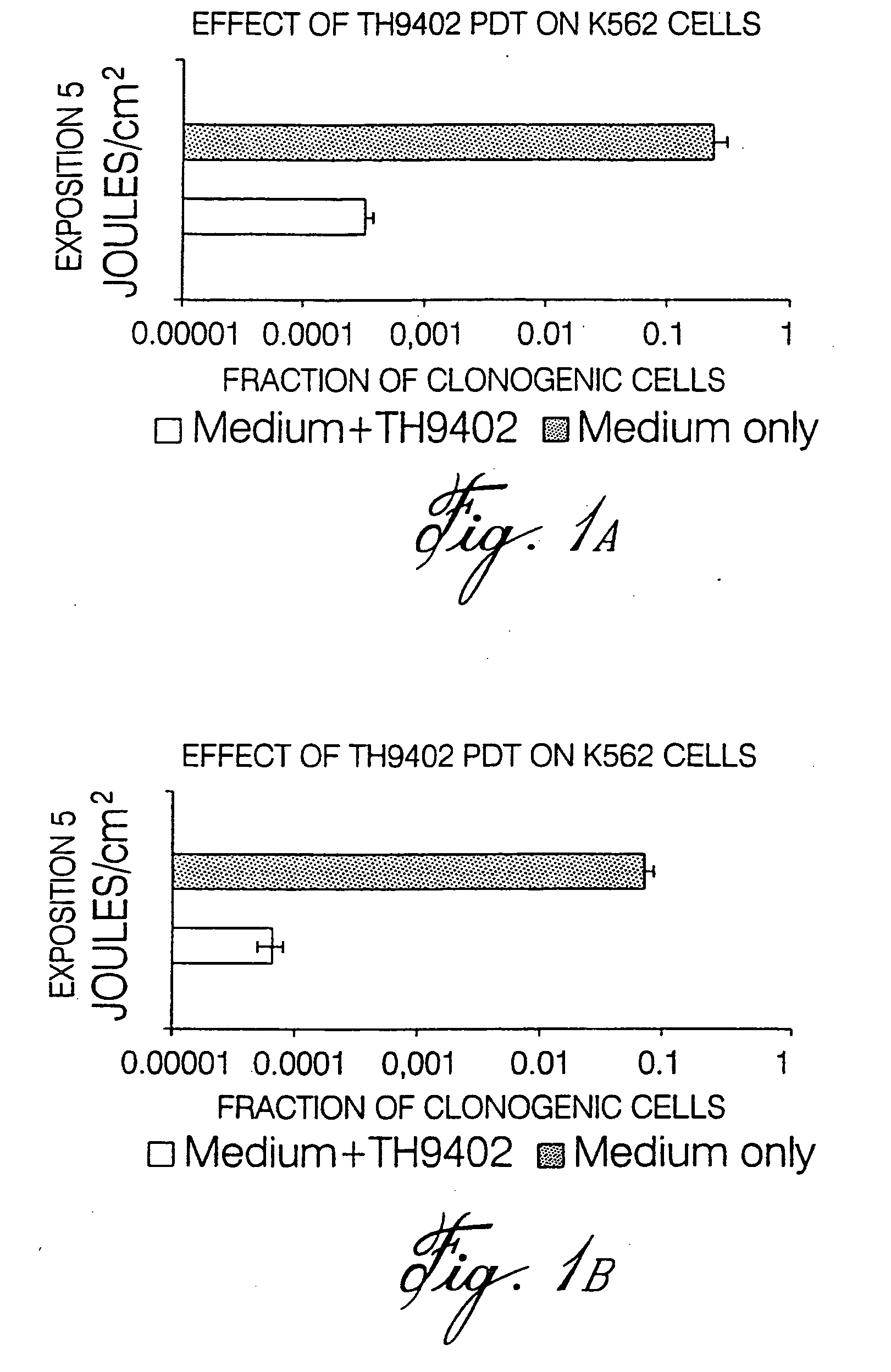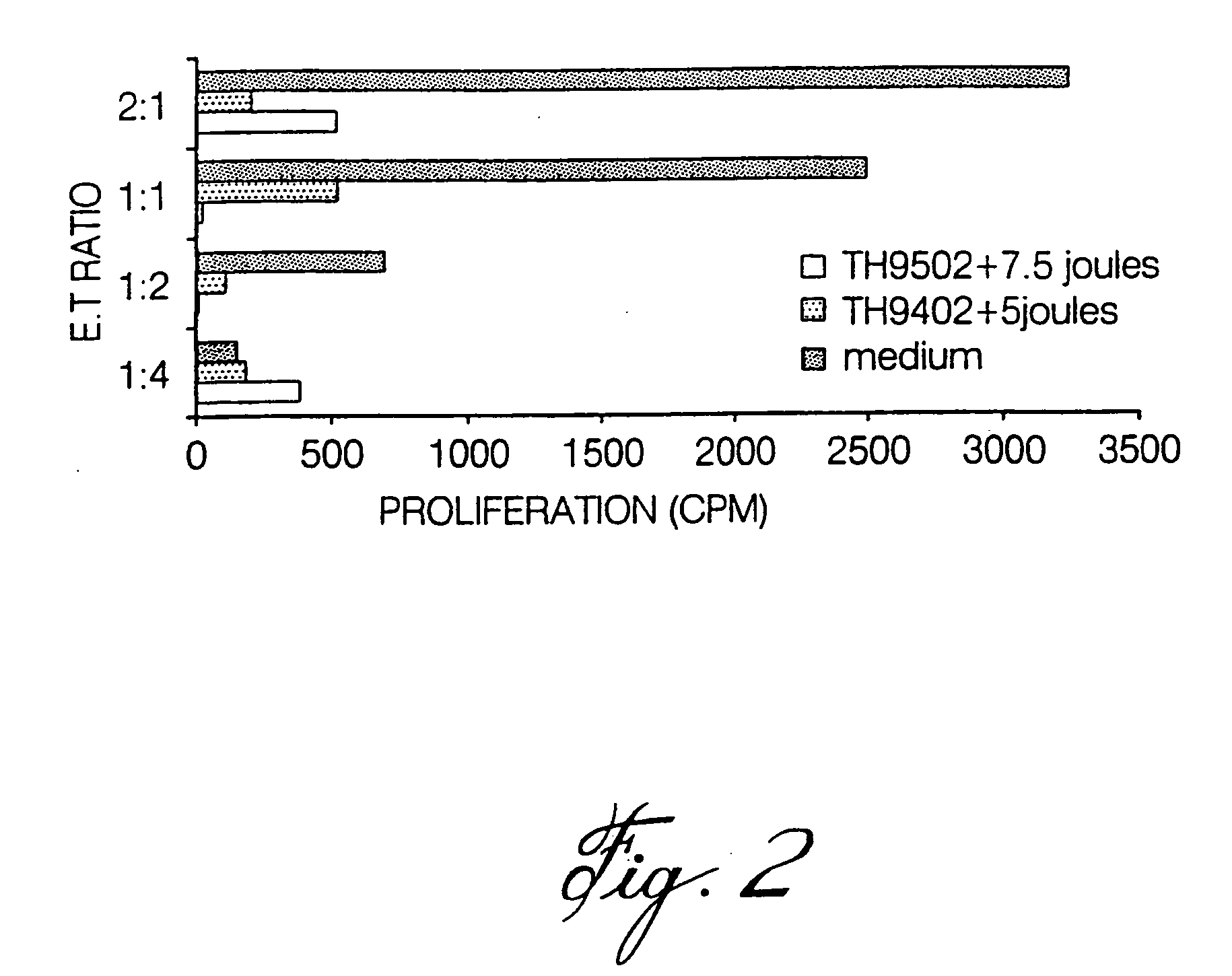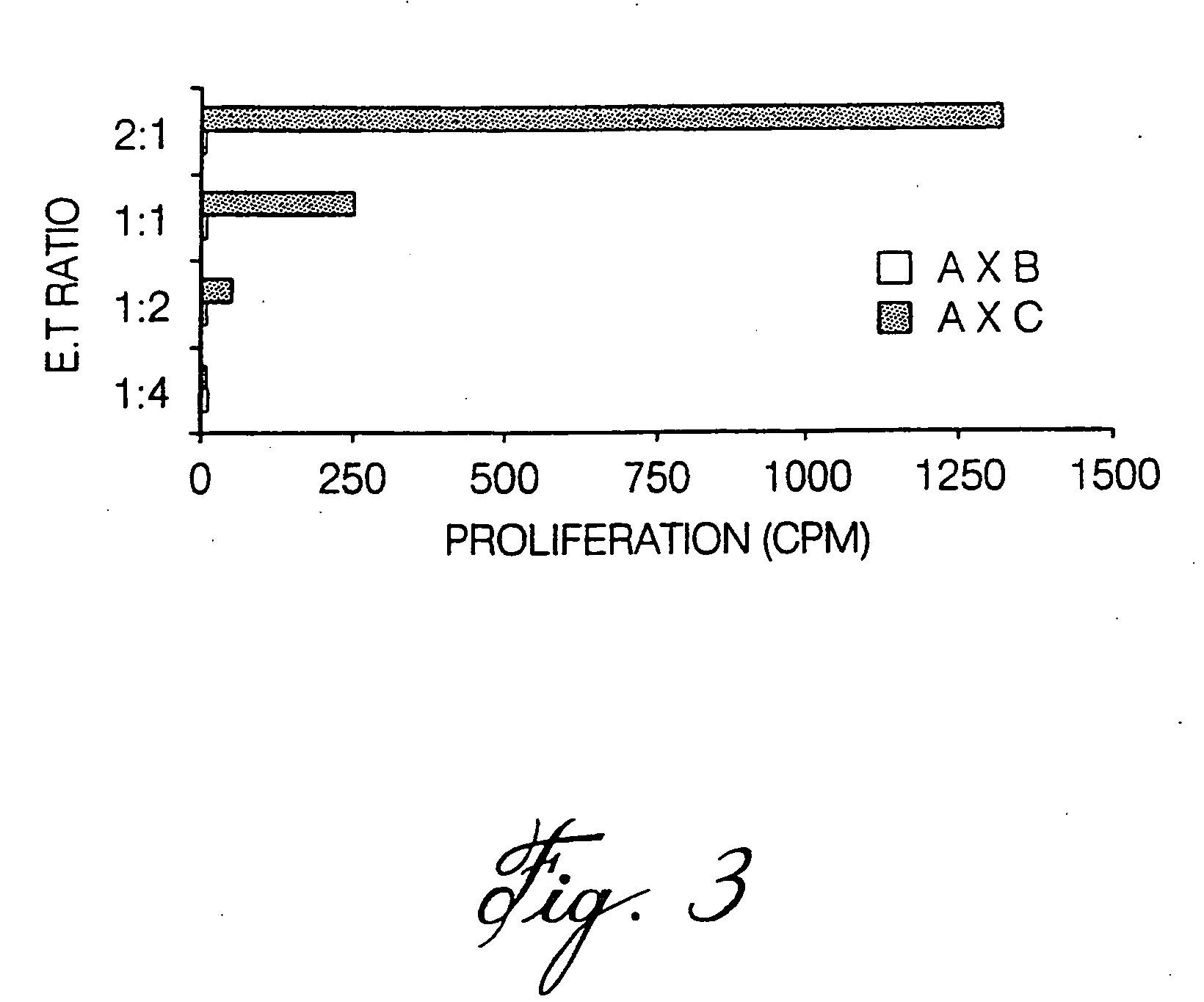Rhodamine derivatives for photodynamic diagnosis and treatment
- Summary
- Abstract
- Description
- Claims
- Application Information
AI Technical Summary
Benefits of technology
Problems solved by technology
Method used
Image
Examples
example i
Method of Prevention of Graft-Versus-Host Disease in the Context of Allogeneic Stem Cell Transplantation
Diagnosis and Identification of Immunological Differences Between Donor and Recipient, and Graft-Versus-Host Disease:
[0102] Allogeneic stem cell transplantation is performed for numerous neoplastic and non-neoplastic conditions. Hematological malignancies are comprised of leukemia, lymphoma, multiple myeloma, myelodysplastic syndromes, etc.; and non-hematological malignancies: aplastic anemia, congenital disorders, severe immunodeficiency syndromes, rhumatoid arthritis, scleroderma, lupus erythematosus, multiple sclerosis, HIV and other immune disorders.
[0103] Graft-versus-host disease is a complication of allogeneic stem cell transplantation, where donor cells react against host cells, damaging target tissues (usually skin, liver, gut, lung, lacrymal or salivary glands, etc.). The diagnosis relies on several clinical and laboratory parameters, that are extensively reviewed in...
example ii
Method of Treatment of Graft-Versus-Host Disease and Autoimmune Diseases
Diagnostic Procedures
[0112] Diagnosis of graft-versus-host disease or immunologic disorders is established using conventional clinical, biochemical and / or histopathological examination of the blood or appropriate tissues. Diagnostic and predictive features of GVHD are reviewed in Graft-vs.-Host Disease, Ferrara J L M, Deeg H J, Burakoff S J eds, Marcel Dekker, New York, 1997.
Harvesting of Peripheral Blood Cells
[0113] After diagnosis of severe GVHD, autoimmune or immunologic disorder, peripheral blood (PB) mononuclear cells are harvested using previously described or similar leukopheresis procedures (reviewed in Bone Marrow Transplantation, Forman S J, Blume K G, Thomas E D eds, Blackwell Scientific Publications, Cambridge Mass., USA, 1994). Patient's peripheral blood mononuclear cells collected are treated immediately ex vivo as described below.
In vitro Elimination of Cells Mediating GVHD
[0114] Ex vivo ...
example iii
Method of Treatment of Immunologic Disorders
Diagnostic Procedures
[0116] Diagnosis of autoimmune disorders is established using conventional clinical, biochemical and / or histopathological examination of the blood or appropriate tissues. Severe autoimmune diseases are amenable to autologous transplantation (reviewed in Sullivan K M et al., Am. Soc. Hematol., Educ. Program Book, 1998: 198-214).
Harvesting of Hematopoietic Stem Cells
[0117] After diagnosis, bone marrow (BM), peripheral blood (PB) or cord blood (CB) mononuclear cells are harvested using previously described procedures for the autologous marrow transplantation in cancer therapy (reviewed in Bone Marrow Transplantation, Forman S J, Blume K G, Thomas E D eds, Blackwell Scientific Publications, Cambridge Mass., USA, 1994). Patient's hematopoietic stem cells collected for autograft are treated immediately ex vivo as described below.
In vitro Elimination of Cells Mediating Autoimmune Disorders
[0118] Ex vivo treatment con...
PUM
| Property | Measurement | Unit |
|---|---|---|
| Wavelength | aaaaa | aaaaa |
| Transport properties | aaaaa | aaaaa |
Abstract
Description
Claims
Application Information
 Login to View More
Login to View More - R&D
- Intellectual Property
- Life Sciences
- Materials
- Tech Scout
- Unparalleled Data Quality
- Higher Quality Content
- 60% Fewer Hallucinations
Browse by: Latest US Patents, China's latest patents, Technical Efficacy Thesaurus, Application Domain, Technology Topic, Popular Technical Reports.
© 2025 PatSnap. All rights reserved.Legal|Privacy policy|Modern Slavery Act Transparency Statement|Sitemap|About US| Contact US: help@patsnap.com



